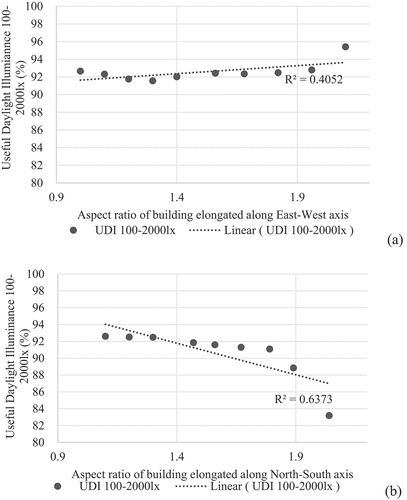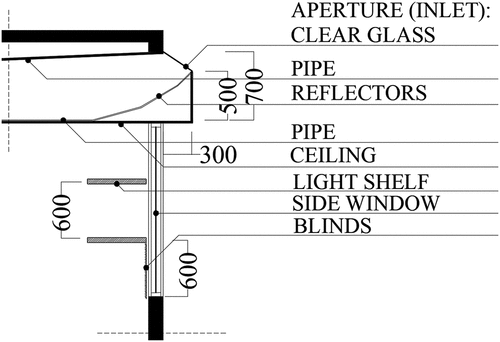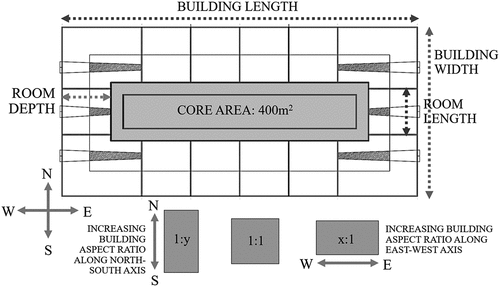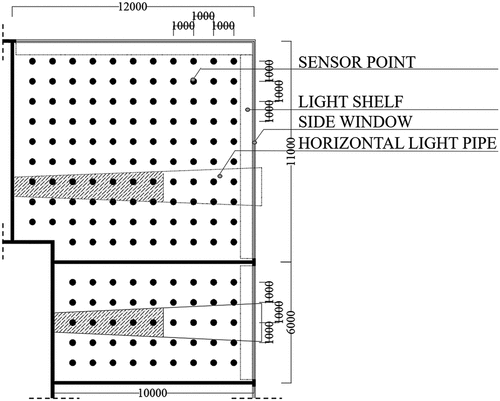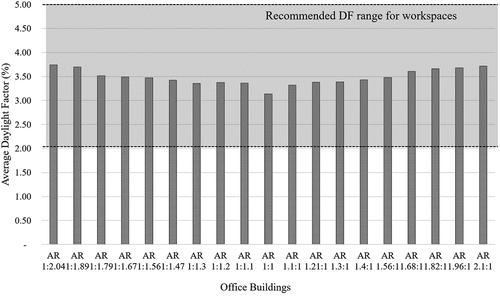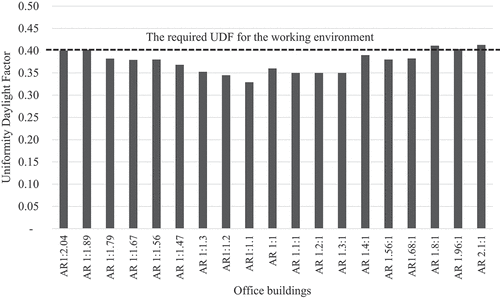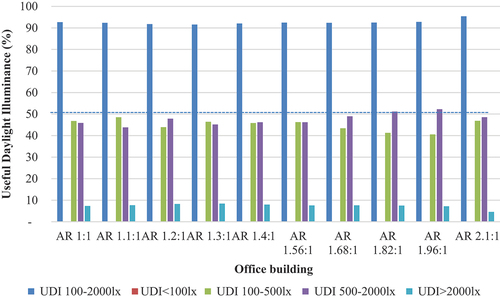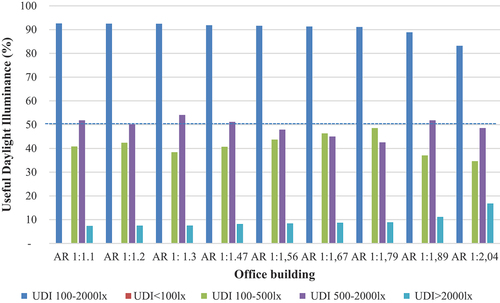Figures & data
Figure 1. Office room with horizontal light pipe and shading systems (a) perspective (b) plan and (c) section (Elsiana, Nastiti N Ekasiwi, and Gusti Ngurah Antaryama Citation2021).
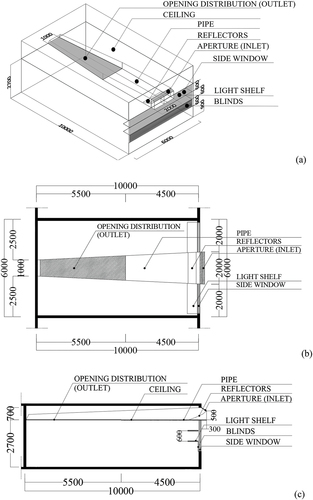
Figure 2. Average sunshine duration of Surabaya (CitationMeteorological, Climatological, and Geophysical Agency of Surabaya).
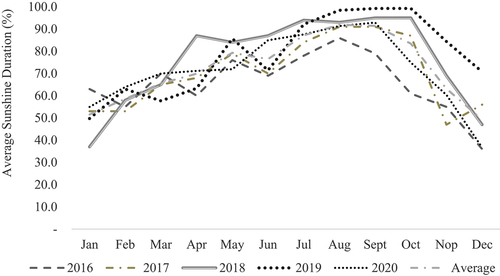
Figure 3. The average sunshine duration and the estimated probability of occurrence of clear, intermediate, and overcast sky conditions.

Table 1. Radiance parameters in IES-VE simulations.
Figure 4. Configuration of the base-case office building implementing horizontal light pipe and shading systems.
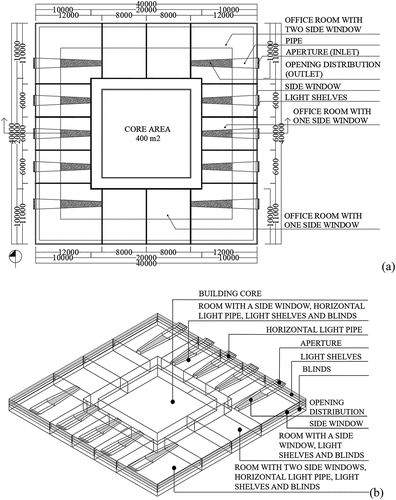
Table 2. The configuration of base case and cases.
Table 3. Materials and surface properties in IES-VE simulation.
Figure 9. Percentages of average daylight factor improvement of office buildings with a different aspect ratio.
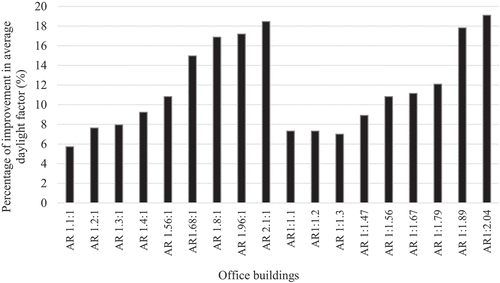
Table 4. Daylight factor comparison between the base case and all cases.
Figure 13. The relationship of building aspect ratio with average daylight factor and uniformity daylight factor.
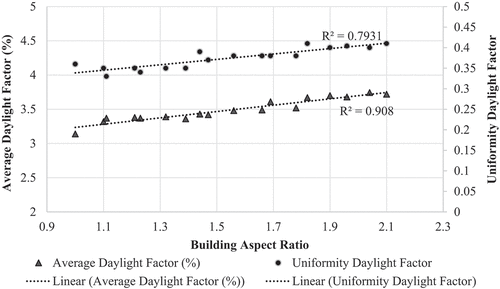
Figure 14. The relationship of building aspect ratio elongated along (a) east-west axis and (b) north-south axis with UDI100-2000lx..
